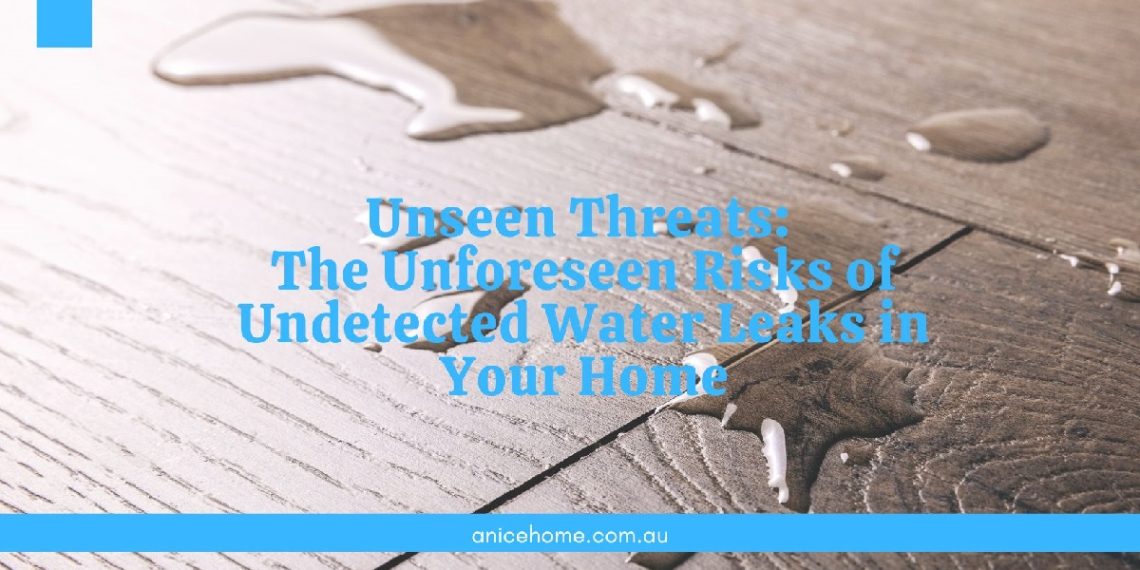Unseen and often underestimated, water leaks can pose significant risks to homes. From damaging structures to accelerating mold growth, unchecked leaks lead to a host of issues that many homeowners might not immediately recognize. This article explores the unseen threats of undetected water leaks and their potential impacts on your home, emphasizing the importance of water damage restoration. Understanding these risks underlines the necessity of taking proactive measures early, preserving both your home’s structural integrity and your peace of mind.
Mold is one of the most insidious consequences of water leaks that often goes unnoticed. Even small, seemingly insignificant leaks can create the perfect breeding ground for mold, especially in dark, damp environments. Mold growth can start within 24 to 48 hours of water exposure, and the longer it is left untreated, the more extensive the damage becomes. Mold not only threatens the health of your home’s structure but can also pose serious health risks to the residents, such as allergies, respiratory issues, and even neurological symptoms in extreme cases.
When mold begins to take root, it’s essential to address the problem swiftly and effectively. That’s where a mold remediation contractor UWRG comes in. These professionals specialize in identifying hidden mold sources, safely removing the growth, and restoring the affected areas. By employing advanced techniques and tools, they ensure that mold is completely eradicated, preventing further spread and long-term health risks. Proactive mold remediation also helps mitigate the risk of mold reoccurring in the future, keeping your home safer for years to come.
Understanding Water Leaks: Not Just a Dripping Tap
When considering water leaks, most people imagine a persistently dripping tap. However, the reality can be far more covert. Water leaks can occur anywhere in your home where water is routed, from hidden pipe junctions to concealed sections of your roofing. Common hidden leak sources include faulty pipe seals, damage to water-reliant appliances like dishwashers, and even condensation build-ups inside your walls. As these leaks are often concealed, they may go unnoticed until significant damage is done, reiterating the importance of vigilance and regular check-ups for potential leak-prone areas.
Unseen Damage: Structural Risks Posed by Water Leaks
The potential damage from water leaks extends far beyond visible damp patches. Over time, unchecked water can severely compromise your home’s structural integrity. Structural elements like wooden beams, drywalls, and foundational concrete absorb this water, creating the optimal conditions for rot and erosion. Additionally, prolonged exposure can cause walls and floors to warp or bow, and in extreme cases, structural failure may occur. These complications could not only endanger occupants but could also significantly decrease the value of your home.
Mould: The Unwelcome Guest in Your Home
A consistent surplus of moisture can lead to another unwelcomed homeowner headache – mould. These fungi thrive in damp conditions, and a small, unaddressed leak can provide the perfect breeding ground. Mould can have severe health implications, triggering allergies, exacerbating respiratory conditions, and even causing neurological issues. Beyond these health risks, mould remediation can be both costly and labour-intensive. This process often involves removing and replacing large sections of impregnated material, adding to the financial strain of undetected leaks.
The Financial Strain Of Undetected Water Leaks
The monetary implications of water leaks can be extensive. Over time, even minor leaks can result in surges on water bills, while the associated repair costs can tally into the thousands. Homeowners may also face substantial renovation costs for replacing damaged sections, particularly if the water damage affects structural elements. Further, home insurance costs may inflate due to past water damage, adding an ongoing financial toll on homeowners.
Protecting Your Home from Water Leak Damage
While the threats of water leaks are considerable, their impact on your home isn’t entirely inevitable. Regular inspections and proactive identification of potential leak sources play a vital role in safeguarding your home. Additionally, preventive maintenance, including regular seal checks and pipe inspections, can help avert onset leaks. Knowing when to hire a professional to help fix the issue further enhances your chances of nipping the problem in the bud. Reliable plumbers can detect and remediate leaks before they evolve into significant problems, reducing the potential for the severe impacts outlined earlier.
Water leaks may begin as small, almost unnoticeable issues, but their potential for damage should never be underestimated. The gradual seepage can lead to structural concerns, such as weakened foundations, mold growth, and irreparable damage to walls and flooring. By committing to regular maintenance and early detection, homeowners can significantly reduce the risk of these outcomes.
Beyond addressing immediate leaks, it’s equally crucial to consider long-term solutions for moisture control, especially in areas prone to dampness. This is where a reputable damp proofing company wakefield can provide invaluable assistance. Damp proofing specialists focus on identifying and resolving issues related to excess moisture, ensuring that your home is protected against problems like rising damp, condensation, and structural decay. By investing in professional damp proofing, you’re not only safeguarding your property’s structural health but also creating a healthier living environment. With expert services tailored to your home’s specific needs, these professionals can provide effective, lasting solutions to keep dampness at bay for years to come.
Conclusion
To summarise, undetected water leaks pose a silent but substantial threat to homes, impacting structural integrity, spurring mould growth, and leading to substantial financial drains. Fortunately, proactive homeowners can mitigate these risks by implementing regular inspections, embracing preventive maintenance, and seeking professional expertise promptly. Don’t let the unseen threats compromise your home or your peace of mind – address water leaks before they evolve into significant problems.


